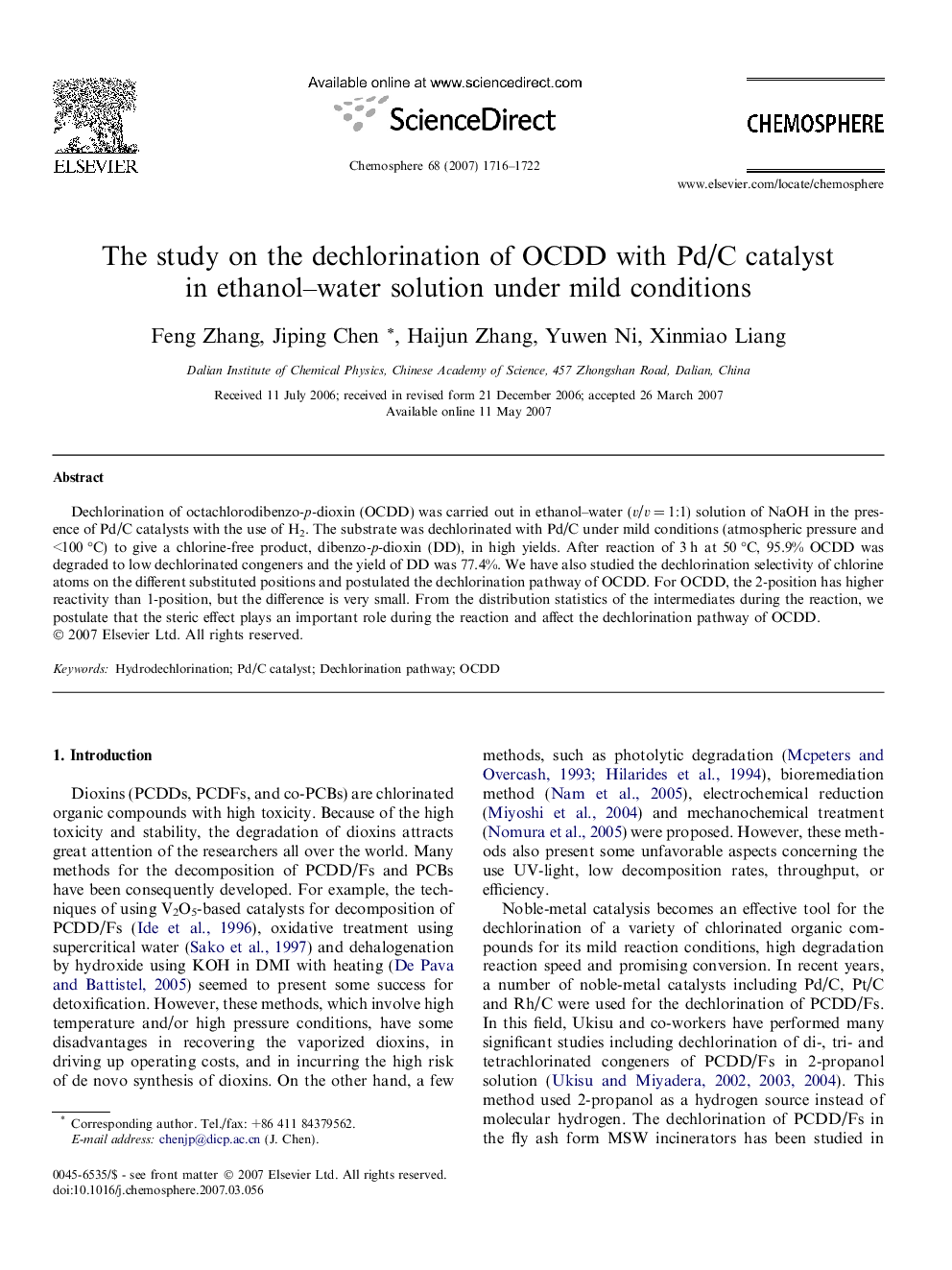| Article ID | Journal | Published Year | Pages | File Type |
|---|---|---|---|---|
| 4415332 | Chemosphere | 2007 | 7 Pages |
Dechlorination of octachlorodibenzo-p-dioxin (OCDD) was carried out in ethanol–water (v/v = 1:1) solution of NaOH in the presence of Pd/C catalysts with the use of H2. The substrate was dechlorinated with Pd/C under mild conditions (atmospheric pressure and <100 °C) to give a chlorine-free product, dibenzo-p-dioxin (DD), in high yields. After reaction of 3 h at 50 °C, 95.9% OCDD was degraded to low dechlorinated congeners and the yield of DD was 77.4%. We have also studied the dechlorination selectivity of chlorine atoms on the different substituted positions and postulated the dechlorination pathway of OCDD. For OCDD, the 2-position has higher reactivity than 1-position, but the difference is very small. From the distribution statistics of the intermediates during the reaction, we postulate that the steric effect plays an important role during the reaction and affect the dechlorination pathway of OCDD.
